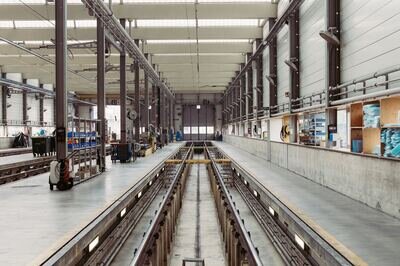ERP for Distributors Utilizing Outside Manufacturing
If your manufacturing operations sometimes involves the use of outside manufacturing, done on a commission basis, and if you plan to use warehouse management ERP for distribution, then blueprint the inventory movements, financial transactions, and material identifications you plan to use carefully, and test these extensively within your outside manufacturing ERP system.
Hopefully the instructions above are unambiguous, because while the process itself is easy to understand intuitively, the transactional flow in an integrated ERP system is complicated. If this process is the last thing you design and build, you may find that the combination of all your previous decisions has eliminated any viable outside manufacturing ERP solution to handle this flow efficiently.
For instance, do you plan to ship the final product from the commission manufacturer, from a third party distributor, or bring it back into your own distribution? These are all questions which should influence decisions of ERP selection. The answers to these questions will also determine whether you need to set up additional warehouses, additional storage locations, or whether the inventory is just going to disappear into a financial black hole and then magically reappear later.
Comfort Zones Left Behind
Ask your financial subject matter experts how the incremental costs of additional commission manufacturing are going to be handled. Their comfort zone is going to be that the product is incomplete – still work in process – when it leaves the warehouse, and therefore, commission finishing is just part of the routing. However, when you go to supply chain and distribution with this solution, and they realize that the door has just been opened to parking incomplete work orders and WIP in the sales goods warehouse, they will be justifiably uncomfortable. They will suggest that the commission manufacturer be set up as a sister plant, which then leads to the realization that the material number on the product must change, which in turns, gets marketing in an uproar.
Again, it isn’t that this is an impossible process to handle, but it does require cross functional cooperation and understanding of how warehouse management operates. It is the warehouse management that normally trips up the solution, since everyone designs with the paradigm that you can just write down the six pallet numbers that you want to send to a commission manufacturer, and a week later, he will send you six pallets back, more or less (which does invite the design question, “how do you plan to handle yield losses at the commission manufacturer?”). This is based on the legacy paradigm that you could manage commission finishing with an offline process, but when using ERP, warehouse management is about controls and certainty, and any attempt to work around warehouse management within an outside manufacturing ERP system will end up taking more time in the long term. If you can’t facilitate the kind of cross functional cooperation and compromise it takes to forge a smooth running transactional flow within an ERP environment, the customer will be the one to ultimately suffer, since there will be unexpected delays, misrouted deliveries, and uncertain promises.
If this is important to you, make sure it works smoothly before ERP go live; it is very difficult to fix after go-live so extensive testing is essential.
Free white paper

Warehouse Management Systems 8 Steps to Success

Related articles
-

ERP Automation Tips for Your Supply Chain
Learn about the stages in your company’s supply chain which can be optimized through ERP automation.
-

Secret KPI: Why Your ERP Implementation Team Matters More Than Software
Learn how Godlan ensures successful ERP implementation for manufacturers with proven strategies &...
-

4 key tasks for manufacturing ERP selection
How to start your manufacturing ERP selection process

